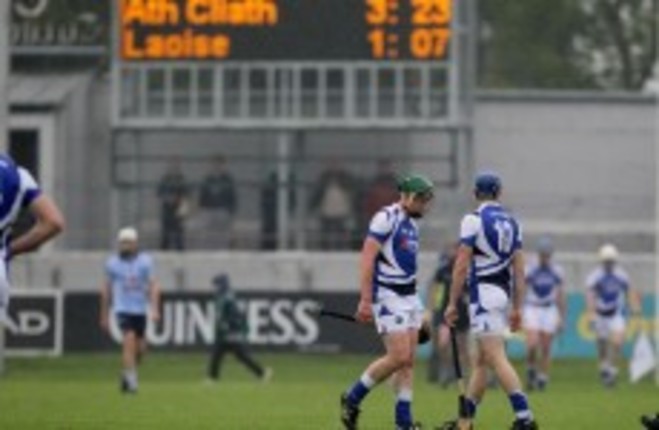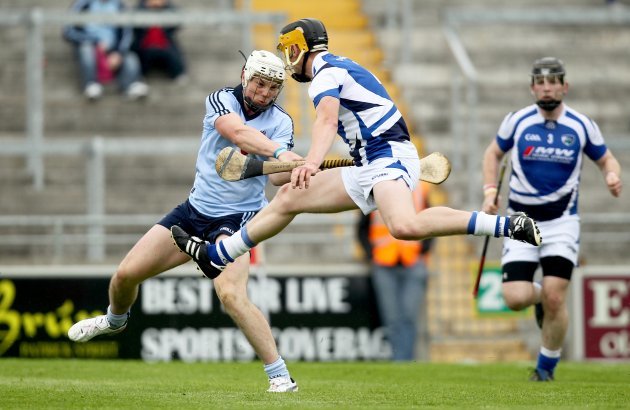SO OFTEN IT’S the result that matters.
After Dublin’s gutting of Laois, it’s the scoreline that does.
Because in a 14-team competition, seeing a canyon of 22 points between two of those sides is a worrisome situation.
Not that this is an isolated incident. Twelve of the 25 championship games in 2011 were decided by nine points or more – a ‘solid beating’, as it is sometimes known in hurling vernacular.
A scoreline can often be skewed by a late glut of flags but the point remains that too many games are not competitive.
Look at the provincial finals last year; decided by 21 points in Munster and 11 points in Leinster. These same four teams contested the All-Ireland semi-finals and while the margins of victory were between four and six points at that stage, previous results meant there was a Teflon grasp on the public’s imagination.
You could have combined the attendances of both semis and still had empty seats throughout Croke Park.
And that’s the point: there’s not enough reason to show up to many of these games because too often it’s a turkey shoot.
Of course Dublin are not too blame for steamrollering weaker opposition. Fair play to them in what is their first competitive win of the year. The manner in which Liam Rushe could brush aside the O’Moore Men and stick the ball into the net twice told of a power advantage.
Something Laois goalkeeper-cum-defender Paddy Mullaney – who missed the game with a hand injury – suggested was not the case when we spoke with him a few days before the Tullamore clash.
“I dunno if physically they’re fitter, faster or stronger than any other county in the country really at the minute,” Mullaney said of Dublin. A call to arms for his county men but it was clear from early on who was cooking whose goose.
The funny thing is that while Dublin are a powerful side, it is not beyond the realms of possibility that they will be hammered at some stage this year.
Dublin’s Liam Rushe scores his side’s second goal despite Gearoid Burke of Laois ©INPHO/James Crombie
Baulk if you must, but the same folk suffering from a fit of the vapours now probably would have a year ago too had the same thing been suggested in the lead-up to Kilkenny’s 11-point Leinster final win.
It could happen again. We hope not for the sake of hurling, but we can’t rule it out either. That’s just the nature of a sport that exposes a skill deficit between teams more starkly than most others in the world. A discipline where a somewhat weakened Offaly team can lose by 20-some-odd points to a scratch Kilkenny team in a challenge.
And every time a hurling fan looks at the GAA schedule and sees a game that someone “might win handy enough”, they’re as likely to err on the side of caution and not go.
Because as frustrating as it can be to pony up the dough to see Ireland’s soccer team defend for 90 minutes, at least the result is almost always up for grabs ’til the end. The tension remains, as it so often does not in inter-county hurling.
It’s why there were tracts of cold seats at O’Connor Park in Tullamore on Saturday and in Thurles for Tipp’s double-coded double-header with Kerry and Limerick. Why Esler Park in Newry was all but empty for an All-Ireland Under-21 semi-final last year – after all, how many people were interested in seeing a 3-23 to 0-6 “contest”?
The one upshot is that the lay of the land this term suggests there will be fewer lopsided games. Cork, Dublin, the Cats, Tipp, Limerick, Galway, Waterford, Offaly and so on – most can feel like they could give each other a good game. Most, though not all.
Laois are in a bad place; they lost a game when conceding 10-20 (50 points in new money) to Cork last season, have players in the county that won’t answer Teddy McCarthy’s call and tasted defeat in each Division 1B league game in 2012. With any luck, their result will be the exception.
Limerick have put it up to Tipperary, Westmeath shocked Antrim, and there was less than the puck of a ball between Offaly and Wexford. No more than four points between any of those three games, while Laois had previously beaten Carlow by a respectable seven.
Of course more can be done in counties where hurling’s progress in developing or even at embryonic stages. When Westmeath manager Brian Hanley was speaking last week of how his young players needed to get used to eating and conditioning themselves properly, it’s clear there is an unnecessary gap among some counties. He’s trying to bridge it.
Yes, the likes of Dublin enjoy infrastructural advantages, which include colleges equipped with top-class facilities, and a superior population base but it need not amount to a side rattling off 20 scores in a row during a game as the capital men did.
Dublin’s 22-point win over Laois stands alone as the low watermark in the 2012 championship; hopefully it remains that way. We don’t want to see another team fall 3-22 to 1-1 and not score for 40 minutes before eventually washing up on the shore at the raw end of a 3-23 to 1-7 massacre.
Hurling badly needs it, and needs people to remember results moreso than depressing scorelines.

